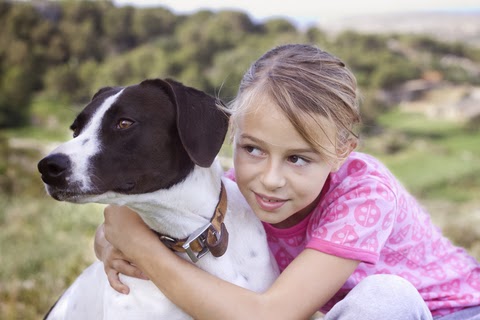In another series of dog-friendly training secrets for enlightened dog lovers – Chief Cheery Officer (CCO) Kiyo recommends that we pay lots of attention to understanding if a dog is stressed. There’s ‘good’ and ‘bad’ stress. ‘Good’ stress prompts a dog to continue learning, ‘bad’ stress causes a dog to shut down, or it reacts to get out of the situation. Just because a dog is still and seems obedient, it doesn’t mean that it’s comfortable. So read the signs carefully.
An important part of being a good dog owner is being able to read how our dog is responding to us or to being in a certain situation. That means that we need to be able to identify our dog’s stress signals – they tell us if our dog is still enjoying itself, it’s merely tolerating what’s happening, or it has had enough. Here are 8 common situations that may cause your dog to be stressed, and could turn into bad moments, if nothing is done to help your dog.
Dog Stress Alert #1: Turning Away
In this photo, the girl appears to be gently restraining the dog. But the dog has turned its head away and its body language suggests that it’s trying to move away from the girl. The dog is merely tolerating being held – turning its head away is a stress signal, which has been ignored.
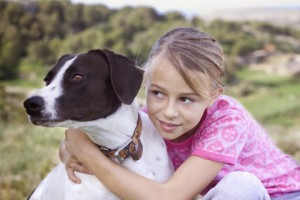 |
| Photo from Dreamstime |
Dog Stress Signal Alert #2: Yawn
We love to hug our dogs, but do they really enjoy being hugged? Often they don’t, at least not right from the start. With positive, reward-based, force-free training methods, we can gradually help our canine buddies be more comfortable about being hugged. In this photo, the dog is displaying at least 2 stress signals – its head is turned away, and it’s stress yawning. Again, the dog is just tolerating being hugged – it’s not enjoying itself at this moment.
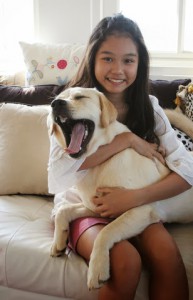 |
| Photo from Dreamstime |
Dog Stress Signal Alert #3: Closed Mouth
We go “ah” at photos like this one, but watch the dog – its mouth is closed, a stress signal that communicates that the dog is merely tolerating being trapped and kissed on both sides of its face. It’s not enjoying it.
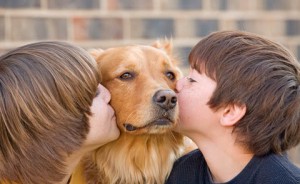 |
| Photo from Dreamstime |
Dog Stress Signal Alert #4: Closed Mouth, Ears Pulled Back, Rounded Back
We hug and kiss each other to show affection and we want to show the same to our dogs. But look again – the dog in the photo is literally cringing at the kiss. Its ears are pulled way back, its back has a rounded shape, it’s avoiding looking at the girl and its mouth is closed. This dog is clearly not enjoying being kissed. Such situations are prime candidates for those bites that “come out of the blue”.
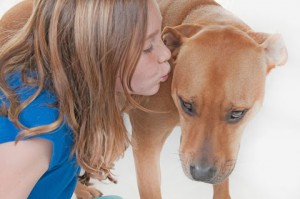 |
| Photo from Dreamstime |
Dog Stress Signal Alert #5: Tongue Flick, Paw Lift, Tucked Tail
This dog is clearly stressed and scared – its ears are pulled back, its tail is tucked under its body and the dog is sitting on it. The tongue flick or lip lick and the paw lift are also stress signals.
 |
| Photo from Dreamstime |
Dog Stress Signal Alert #6: Whale, or “Half-moon” Eye, Dilated Pupils
Another “ah” kind of photo – a dog that’s good friends with another animal. But is it? Look at how stiff both animals are. The pupils of the dog’s eyes are dilated, its mouth is closed and you can see the “whites” of the eye. The latter is called “half-moon” eye or “whale” eye and is another stress signal that’s commonly ignored.
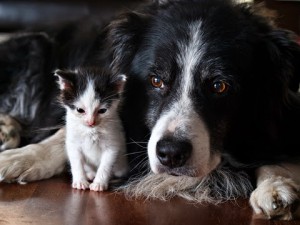 |
| Photo from Dreamstime |
Dog Stress Signal Alert #7: Shake-off
When a dog is stressed and is trying to calm down, it may “shake itself off”. The dog may shake off its whole body, or just parts of it, e.g. the head. When you see your dog shaking off, what it means is that whatever has happened before the “shake-off” was causing stress to your dog. It could be a hug, a kiss, a pet over the head or a distraction that was too overstimulating for the dog.
 |
| Photo from Dreamstime |
Dog Stress Signal Alert #8: Hard Eye, Offensive Pucker
The line between play and aggression is a fine one, and when we don’t manage how our dogs interact with other dogs, the situation can turn volatile. In this photo, the dog on the left has had enough and will escalate the fight if nothing is done to diffuse the situation. So too will the dog on the right. Look at the hard, direct stares, the forward body posture of the dog on the right, and the C-shaped offensive pucker and tooth display from the dog on the left. In this photo, the human is not helping to improve the situation by trapping the dog on the left under his arm while trying to push away the dog on the right.
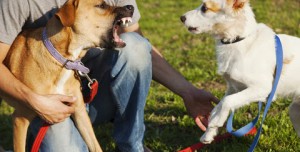 |
| Photo from Dreamstime |
When your dog starts displaying stress signals, do something to improve the situation, or end the interaction and get your dog out of the situation. If you’re not sure of what to do, please consult a qualified trainer or behaviourist to help you and your dog.Here at cheerfuldogs.com, we understand the art and science of how dogs learn, and we can help you.

